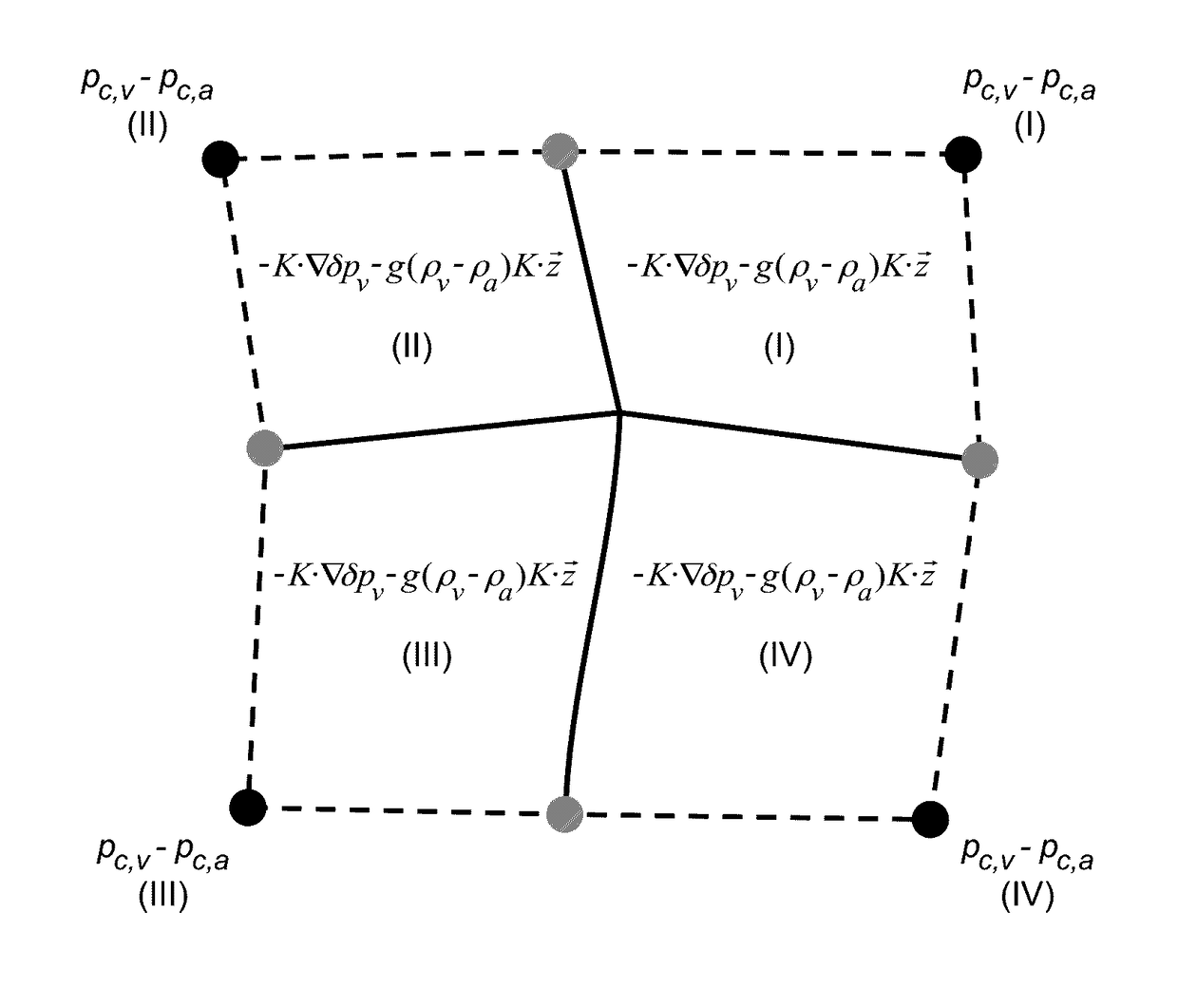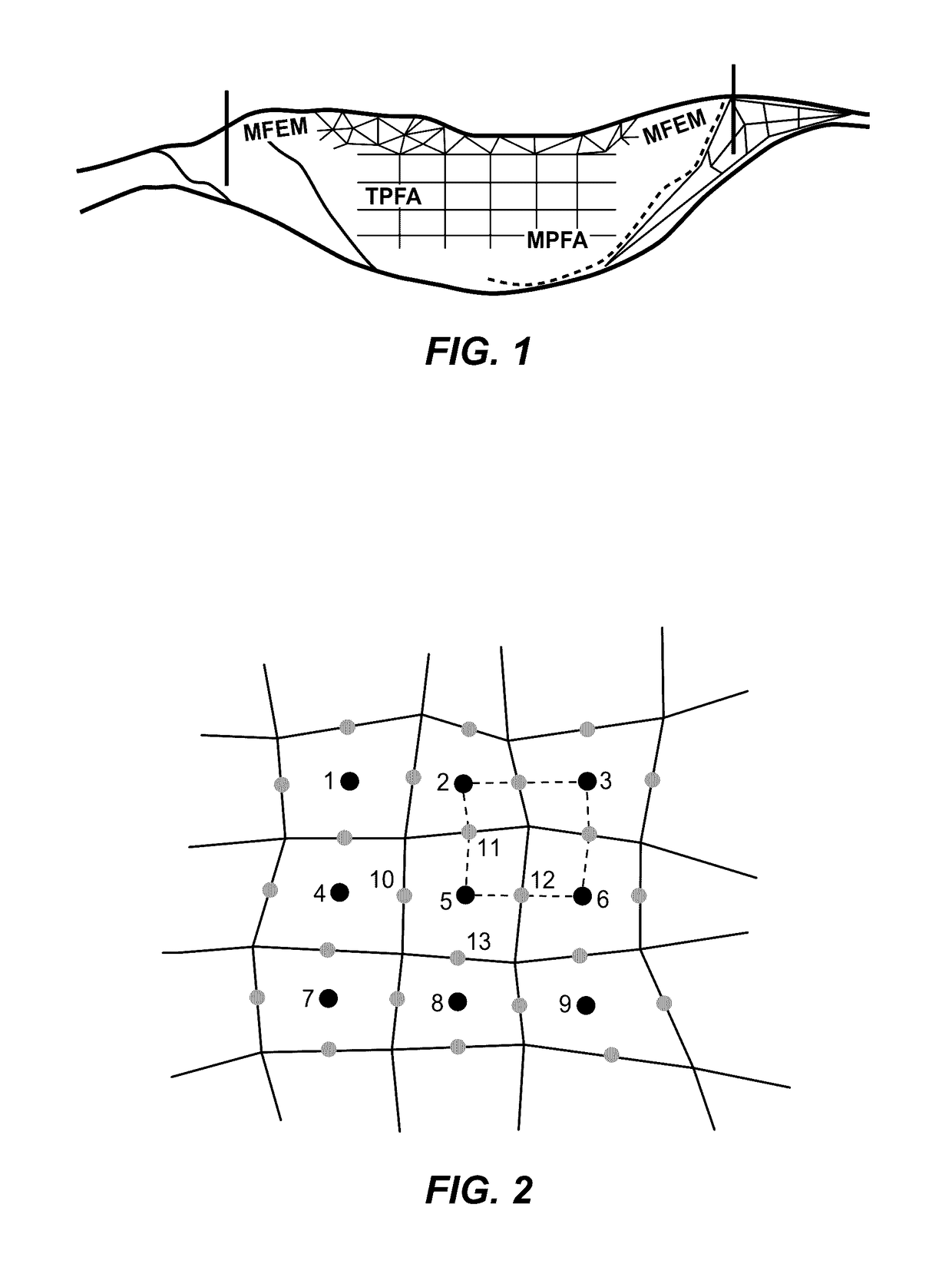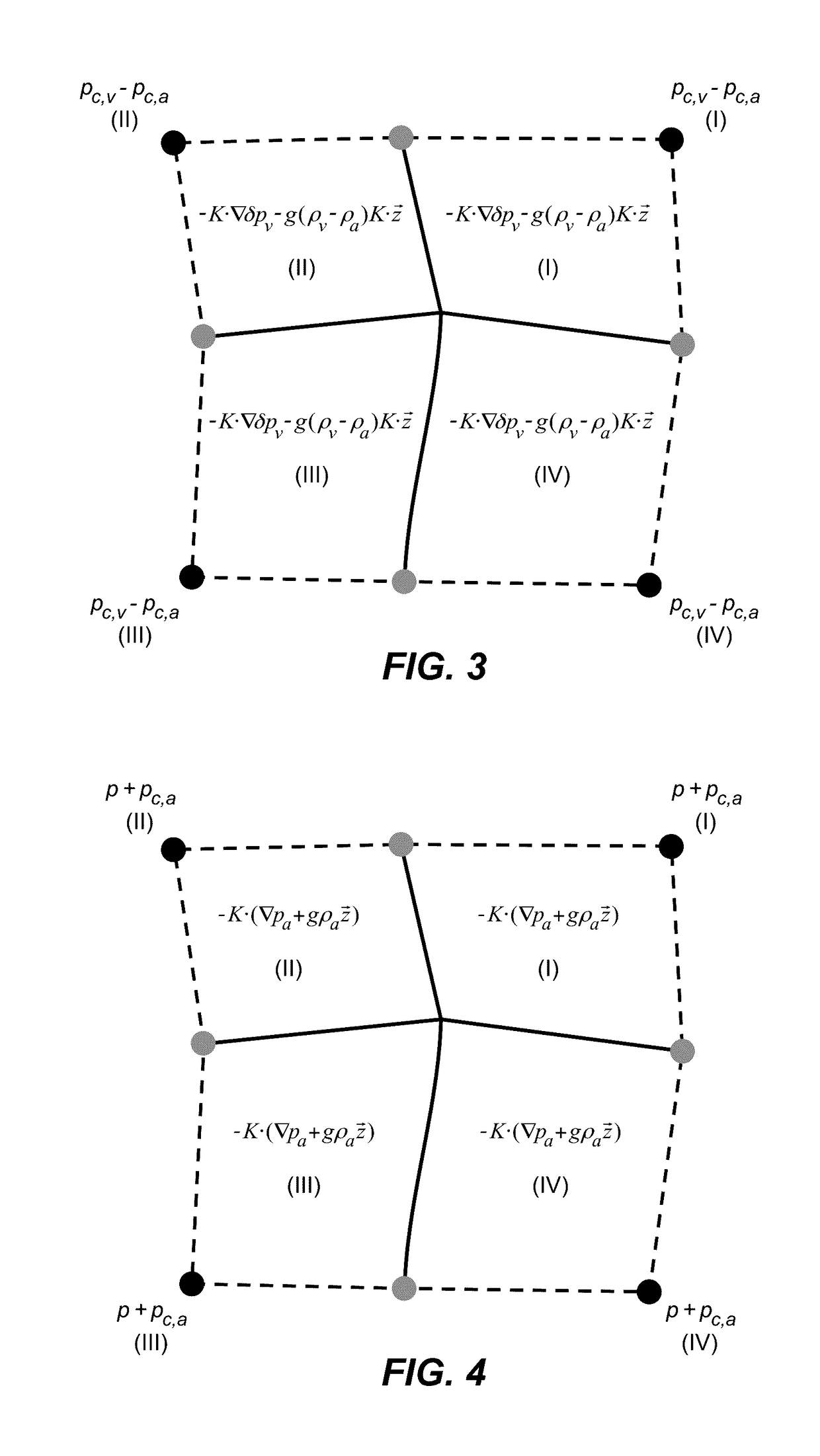Variable discretization method for flow simulation on complex geological models
a geological model and discretization method technology, applied in the field of oil or gas fields, can solve the problems of complex mathematical methods, longer execution time, and difficulty in building a voronoi grid
- Summary
- Abstract
- Description
- Claims
- Application Information
AI Technical Summary
Benefits of technology
Problems solved by technology
Method used
Image
Examples
Embodiment Construction
[0022]The present invention combines finite difference and finite element methods in a single computational framework. The result is a variable discretization method for general multiphase flow simulation. The objective is to capture the strength and avoid the weakness of finite difference and finite element approaches. With this inventive variable discretization method, the reservoir may be divided into several regions and then different discretization methods are applied to different regions depending on the geometry and permeability properties there. For example, for regions containing intersecting faults or lying near an internal surface, a mixed finite element method or a control volume finite element method may be applied after a flexible computational mesh is created; see FIG. 1. For the bulk of the reservoir away from the geological complexities, a structured or Voronoi grid may be constructed and a simpler multipoint flux approximation or a two point flux approximation may ...
PUM
 Login to View More
Login to View More Abstract
Description
Claims
Application Information
 Login to View More
Login to View More - R&D
- Intellectual Property
- Life Sciences
- Materials
- Tech Scout
- Unparalleled Data Quality
- Higher Quality Content
- 60% Fewer Hallucinations
Browse by: Latest US Patents, China's latest patents, Technical Efficacy Thesaurus, Application Domain, Technology Topic, Popular Technical Reports.
© 2025 PatSnap. All rights reserved.Legal|Privacy policy|Modern Slavery Act Transparency Statement|Sitemap|About US| Contact US: help@patsnap.com



